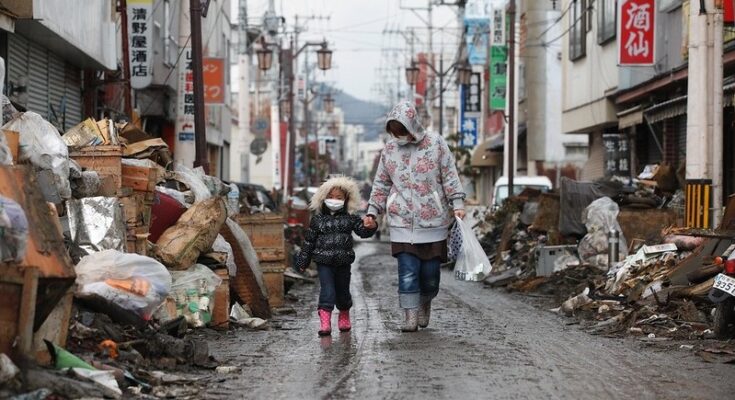Experts in Japan warned that the risk of a huge earthquake and tsunami occurring off the country’s Pacific coast had increased following Thursday’s magnitude 7.1 earthquake in the southwest.
On Thursday, the Japan Meteorological Agency issued its first-ever warning of the risk of a “mega earthquake” after a quake on the southernmost main island of Kyushu, which triggered a tsunami warning. No deaths or major damage have been reported.
The agency’s warning that the risk of a huge earthquake occurring along the Nankai Trough was higher than usual does not mean that a quake will occur in the coming days.
Japan is located in one of the most geologically active regions on Earth. This is primarily due to its position at the convergence of the Pacific, North American, Eurasian, and Philippine Sea plates. These plates are constantly moving, and their interaction causes significant geological activity.
Earthquake in Japan would “generate large tsunami”
The meteorological agency’s megaquake advisory warned that “if a major earthquake were to occur in the future, strong shaking and large tsunamis would be generated”.
It added: “The likelihood of a new major earthquake is higher than normal, but this is not an indication that a major earthquake will definitely occur during a specific period of time.”
The advisory concerns the Nankai Trough “subduction zone” between two tectonic plates in the Pacific Ocean, where massive earthquakes have hit in the past.
The 800-kilometre (500-mile) undersea trough runs from Shizuoka, west of Tokyo, to the southern tip of Kyushu and has been the site of destructive earthquakes of magnitude 8 or 9 every 100 to 200 years.
These so-called “megathrust quakes”, which often occur in pairs, have unleashed dangerous tsunamis along the southern coast of Japan, one of the world’s most seismically active countries.
In 1707, all segments of the Nankai Trough ruptured at once, unleashing an earthquake that remains the nation’s second-most powerful on record after the March 2011 earthquake along the northeast coast.
That quake triggered a tsunami that killed more than 18,000 people and led to a triple meltdown at the Fukushima Daiichi nuclear power plant.
Although it is impossible to predict the precise timing of earthquakes – apart from automated warnings that a quake could occur within seconds – government experts believe there is a 70% to 80% chance of a megaquake measuring magnitude 8 or 9 happening around the trough in the next 30 years.
In the worst-case scenario, the disaster would kill 300,000 people, with some experts estimating a financial hit as high as $13tn.
Related: Are We Prepared for the Next Big Mediterranean Tsunami?



